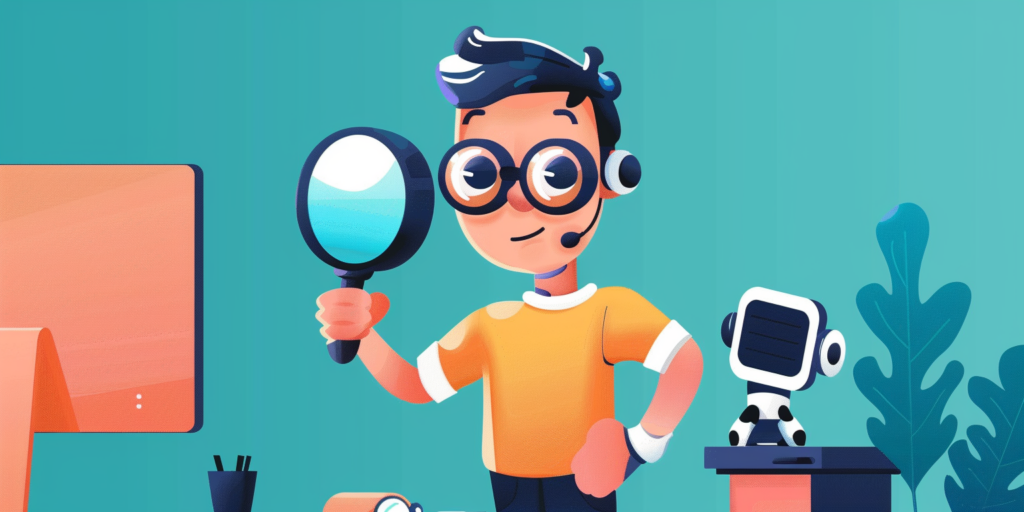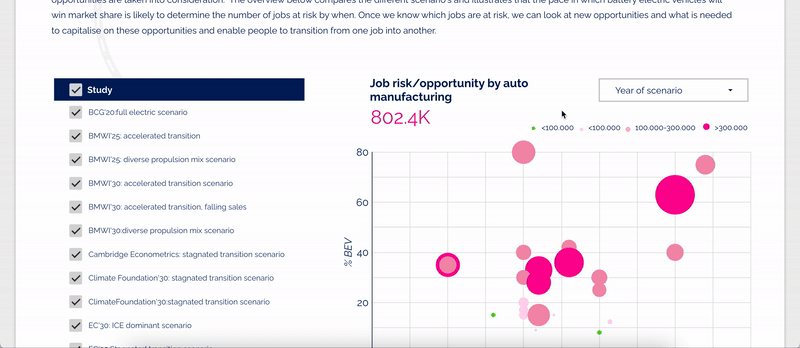As the Covid-pandemic is slowly getting under control, very carefully some events start to take place again. In our world this means we can finally have real live workshops again! Unfortunately, we still need to consider a lot of measurements to provide a safe environment, think of disinfecting tables, wearing masks, keeping distance, ventilating the room, etc. Most of which are difficult to combine with whiteboards and sticking post-its to walls.
6 Takeaways to combine an in-person workshop with online tools
Recently we facilitated the Hack Healthcare event, organised by Hack Belgium Labs. For this hackathon we went back to meeting in person, but we kept the digital tools that we’ve grown accustomed to.
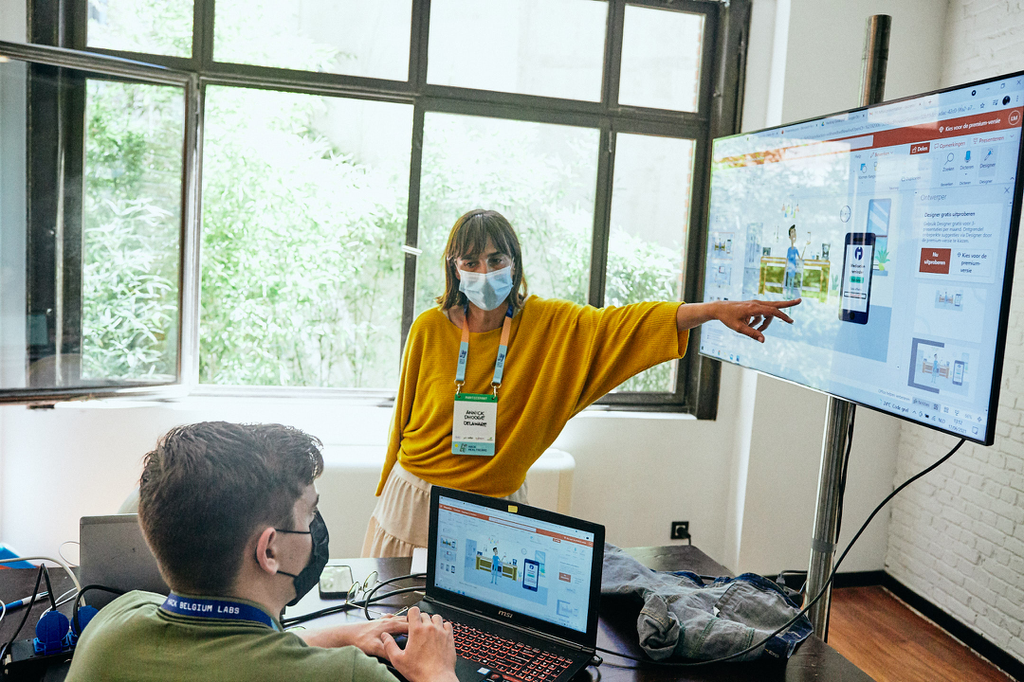
Hack Healthcare was a successful hybrid in-person/online workshop.
The virtual Miro whiteboards we used, have the advantage that each participant has their own computer and doesn’t have to share materials with others. Next to that it is also easier to collaborate and keep distance. In addition, your exercises are immediately digitalised and always remote accessible.
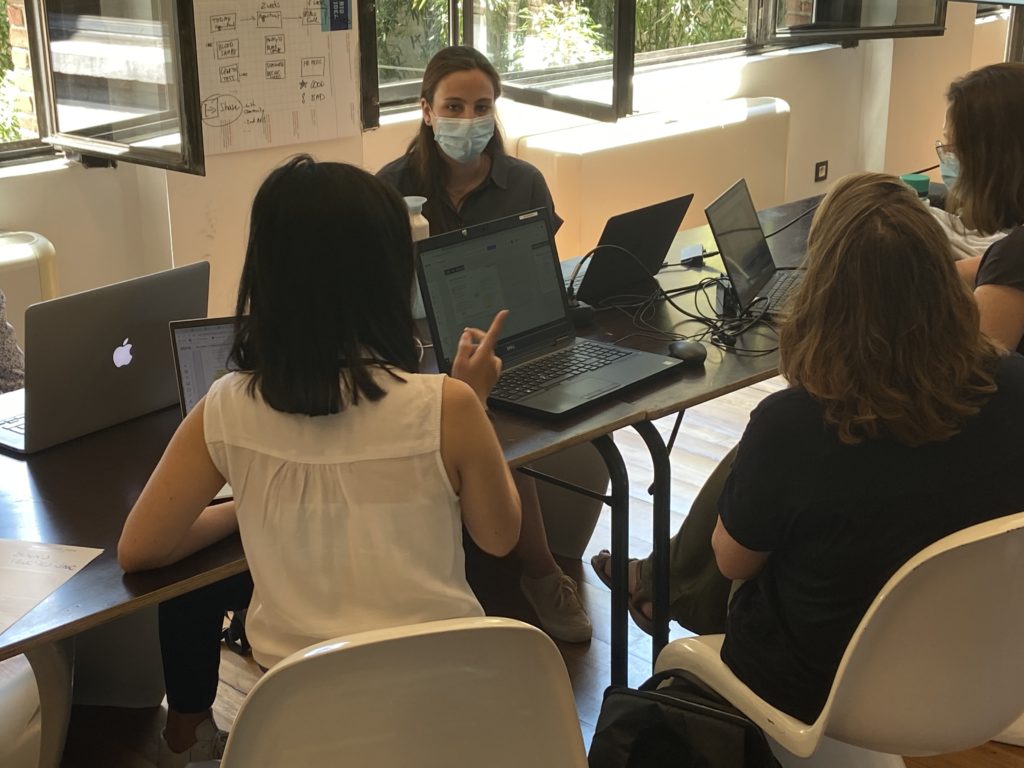
You can talk in person and work on a virtual board.
We learned a lot from this first hybrid workshop. If you are considering holding such a hybrid workshop, here are my 6 takeaways to help you.
#1 Provide the right information at the right time
Participating in a workshop is usually an out-of-comfort-zone-experience. People tend to get overwhelmed by the information they get and will have difficulties figuring out what to do first. To guide them through the different steps of your workshop, make sure to not overwhelm them, but only show what they need right when they need it.
In Miro, the virtual whiteboard application we used, you have the option to hide parts of your board as long as you don’t need it. By doing so participants are not overwhelmed by unnecessary information and it becomes easier to follow the correct steps of your exercises. Also, it creates a little mystery into your boards, which creates curiosity for the next steps.
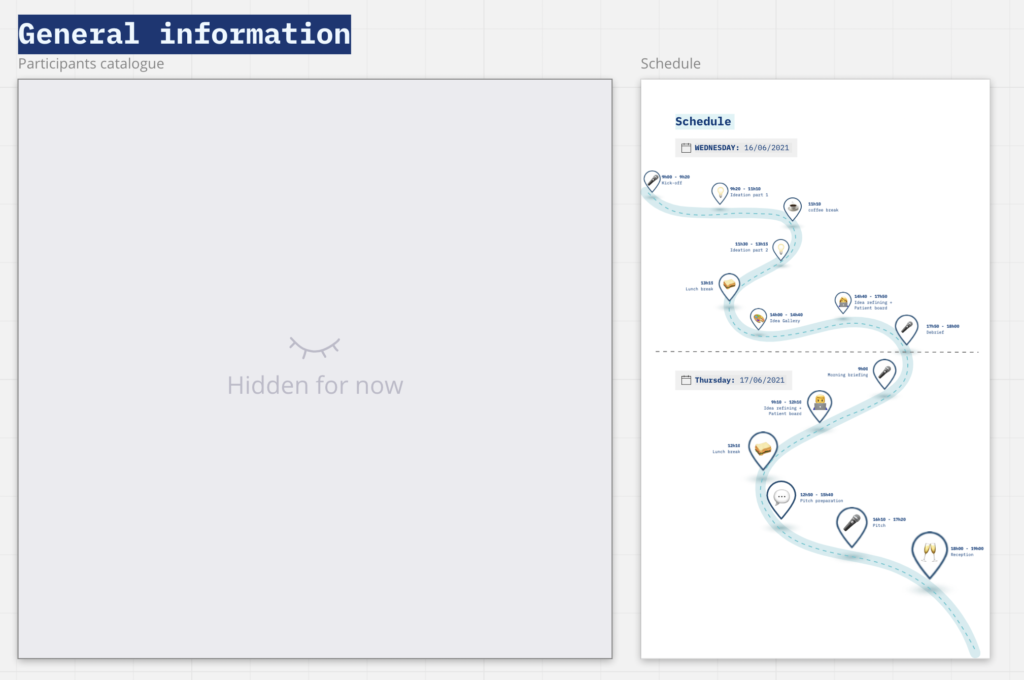
#2 Use multiple boards to boost performance
In a big event with a lot of participants, your virtual whiteboard tends to get slower with every member entering the board. To avoid low performance issues, build separate boards for each part of your workshop.
I recommend making a “Main board” with all general information such as a participants list, a schedule, general rules and guidelines, etc. and also the links to the other boards.
Next to the main board, create boards for each part of your workshop. Try to keep the number of boards logical and as low as possible. The more links to other boards, the more people can get lost.
#3 Less is more
Do not over-engineer your workshop. It is always tempting to use and test different tools during an event, but it also creates confusion for participants. Using one tool helps the participants to stay focused on their tasks and avoids that they get lost and overwhelmed.
Also in your exercises, try to use the basic actions like create a sticky, write on a sticky, drag & drop icons, etc. For non-experienced users this is already quite a lot to master in short amount of time.
In our workshop, hack teams had to schedule meetings with experts to refine and rehearse their pitches. We first considered using a Google sheet for that, but eventually, we decided to do this in Miro itself. We made a schedule and had teams drag their team icons into an available slot. This way we eliminated at least one additional tool.
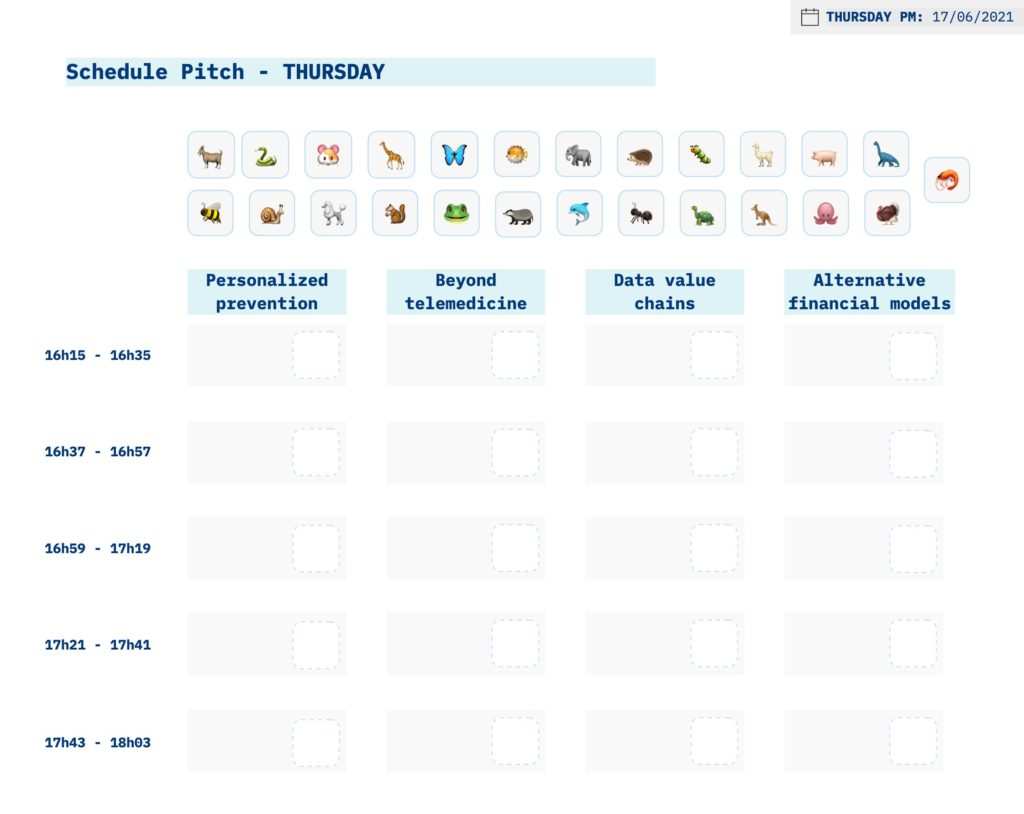
A way to include a scheduling exercise into your board instead of using another tool.
#4 Lock everything & keep it clean!
To avoid a messy board, lock everything that shouldn’t move. Let me say this again: lock everything that should not move. This is crucial for the experience of your participants. A small mistake happens fast and it will create real quick a chaotic board. Once your board is messed up, it is very complicated to restore. So better safe than sorry.
You can get people to get acquainted with Miro beforehand. We organized some sessions before the event in which we explained the basic functions in Miro and had them practice for a while. But for many participants, the event itself was their first contact with Miro. And they will make mistakes for sure.
One example is that in Miro users often try double clicking (to follow a link for instance), but this will create an empty post-it. Soon you’ll have several empty post-its covering parts of your board. It’s good to have an administrator following along and immediately removing those empty post-its to keep the board clean.
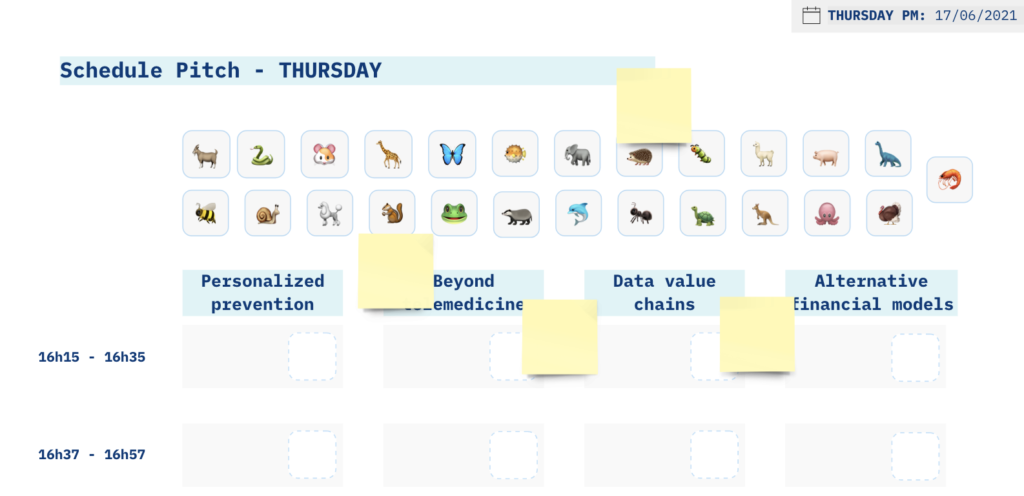
Random post-its covering up important parts of the board.
#5 Still provide ways to work with pen & paper
Even if most people feel comfortable using virtual whiteboards, some good old-fashioned pens and papers can always come in handy. It is for example far easier to draw something on a paper than on a virtual board. Also, for less tech savvy people it can help to express their ideas in a non-virtual way.
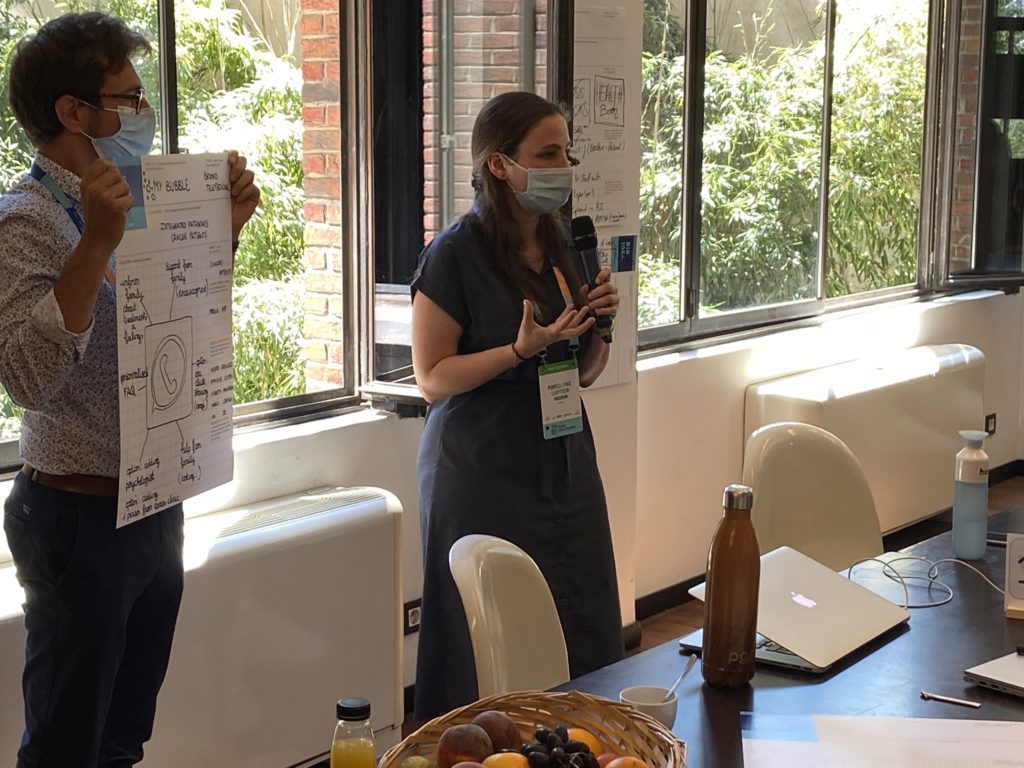
Often it is easier to quickly sketch some ideas using pen & paper.
#6 Make it fun!
Last but not least, use fun elements in your workshop. The fun elements create direct connection between participants, and it is one of the things that makes your event memorable. Some ways to add a playful element in your workshop is by using funny team names (we used cute animals to represent the teams), by doing an active ice breaker, or by using music or funny bells to gather everyone, etc. The possibilities are endless, so let your creativity run wild!
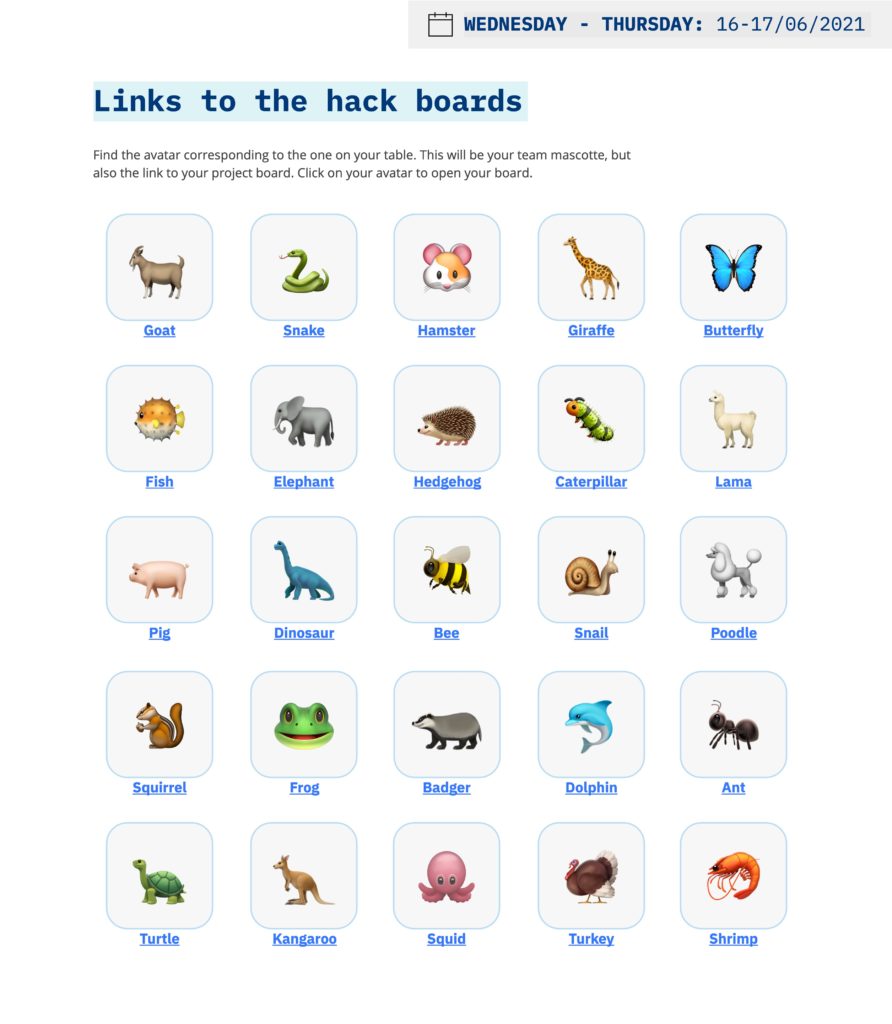
These are the cute team animals we used during the hackathon.
